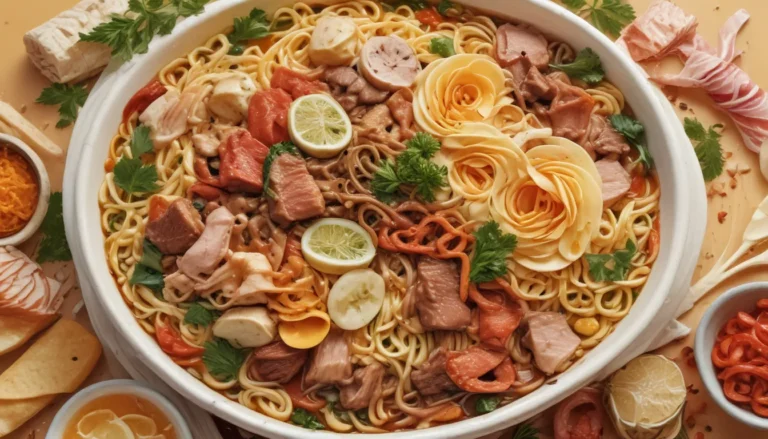The pictures in our articles might not always show exactly what the text is talking about. We use these images to make the article more interesting and eye-catching. They are there to add to the text, but not to replace it or show every detail.
Buffalo wings, with their spicy and tangy flavor, have captured the hearts of many as a favorite snack choice. But have you ever stopped to consider the nutritional value of these delicious treats? In this article, we will delve into the nutritional facts of buffalo wings, exploring their protein content, vitamin and mineral composition, and health considerations. Whether you are a dedicated fan of buffalo wings or simply curious about their nutritional profile, let's take a closer look at what makes these wings a popular choice.
Exploring the Origin of Buffalo Wings
Buffalo wings are chicken wings that are typically deep-fried and coated in a spicy sauce made from a mixture of hot sauce and butter. These finger-licking wings originated in Buffalo, New York, giving them their name, and have since become a beloved snack worldwide.
Caloric Content of Buffalo Wings
Buffalo wings are known to be calorie-dense due to their fat content. A single serving of buffalo wings can range from 300 to 500 calories, depending on factors such as portion size, cooking method, and sauce used.
The Protein Power of Buffalo Wings
Chicken wings, including buffalo wings, are a great source of protein. Protein is essential for the growth and repair of tissues, muscle health, and providing a feeling of fullness. A typical serving of buffalo wings, which consists of about 6 wings, offers approximately 18-24 grams of protein.
Essential Vitamins Found in Buffalo Wings
Buffalo wings contain essential vitamins that are beneficial for overall health. Some of these vitamins include:
- Vitamin B6, which is crucial for brain development, immune function, and the production of hemoglobin.
- Vitamin B12, essential for nerve function, DNA synthesis, and red blood cell formation.
- Niacin (Vitamin B3), important for energy metabolism and maintaining healthy skin.
Beneficial Minerals in Buffalo Wings
In addition to vitamins, buffalo wings also provide important minerals that support various bodily functions, such as:
- Iron, which is vital for oxygen transport in the body and preventing anemia.
- Zinc, essential for immune function, wound healing, and DNA synthesis.
Understanding Fats in Buffalo Wings
The crispy skin of buffalo wings contributes to their overall fat content. The exact amount of fat in buffalo wings can vary depending on the cooking method and type of sauce used. Opting for baking or grilling buffalo wings can help reduce their fat content compared to deep-frying.
Considerations for Sodium Intake
Buffalo wings can be high in sodium due to the sauce used for coating. While sodium is an essential mineral, excessive intake can lead to health issues like high blood pressure. It's essential to be mindful of your sodium consumption and enjoy buffalo wings in moderation.
Embracing the Spice and Capsaicin
The spicy sauce coating buffalo wings often contains hot sauce made from chili peppers. Chili peppers contain capsaicin, a compound responsible for their heat. Capsaicin is known for potential health benefits, such as boosting metabolism and reducing appetite.
Choosing Healthier Cooking Methods for Buffalo Wings
To make buffalo wings a healthier option, consider alternative cooking methods like:
- Baking in the oven to reduce the need for excess oil and retain moisture.
- Grilling as a healthier alternative to deep-frying, allowing excess fat to drip off.
Exploring Sauces and Flavorings for Buffalo Wings
While the classic spicy buffalo sauce is a popular choice, there are milder sauce options available. Opting for sauces with lower sodium and sugar content can make buffalo wings a healthier choice.
Pairing with Healthy Accompaniments
Pairing buffalo wings with fresh vegetables like celery and carrots can enhance the nutritional value of your meal. These crunchy veggies add fiber and additional nutrients to your plate, creating a balanced dining experience.
Mindfulness in Portion Sizes
Practicing portion control when enjoying buffalo wings is essential. Being aware of your serving size can help you manage your calorie and fat intake while savoring this flavorful snack.
Crafting Your Own Buffalo Wings
Making buffalo wings at home gives you control over ingredients and cooking methods. Choosing leaner cuts of chicken, baking or grilling, and experimenting with healthier sauce recipes can transform this snack into a nutritious and flavorful option.
Achieving Dietary Balance
Buffalo wings can be part of a balanced diet when consumed in moderation and paired with other nutrient-rich foods. Including a variety of fruits, vegetables, whole grains, and lean proteins in your diet ensures you meet your body's nutritional requirements.
Seeking Professional Advice
If you have specific dietary concerns or medical conditions, consulting a healthcare professional or registered dietitian before making significant dietary changes is advisable.
In Conclusion
Understanding the nutritional profile of buffalo wings can guide you in making informed choices while enjoying this beloved snack. While buffalo wings can be high in calories and sodium, opting for healthier cooking methods and sauces can make them a more nutritious option. Remember to indulge in buffalo wings in moderation and balance your diet with nutrient-rich foods for overall well-being.
Frequently Asked Questions (FAQs)
Are buffalo wings a healthy choice?
Buffalo wings can be enjoyed as part of a balanced diet. Incorporate healthier cooking methods, control portion sizes, and pair them with nutrient-rich accompaniments for a balanced meal.
Can I make buffalo wings using boneless chicken?
Yes, boneless chicken can be used to make buffalo wings, with cooking times adjusted accordingly.
Are there vegetarian or vegan alternatives to buffalo wings?
Plant-based alternatives to buffalo wings, using ingredients like tofu, tempeh, or cauliflower, are available for vegetarians and vegans.
Can I enjoy buffalo wings on a low-carb diet?
Buffalo wings can fit into a low-carb diet if you consider the carbohydrate content of the sauce and balance it with low-carb accompaniments.
The Verdict
Our dedication to providing accurate and engaging content is our top priority. Each fact shared on our site is contributed by real users like you, ensuring a diverse range of insights and information. Our committed editors review each submission meticulously, guaranteeing the accuracy and reliability of the facts we share. Trust in our commitment to quality and authenticity as you explore and learn with us.






